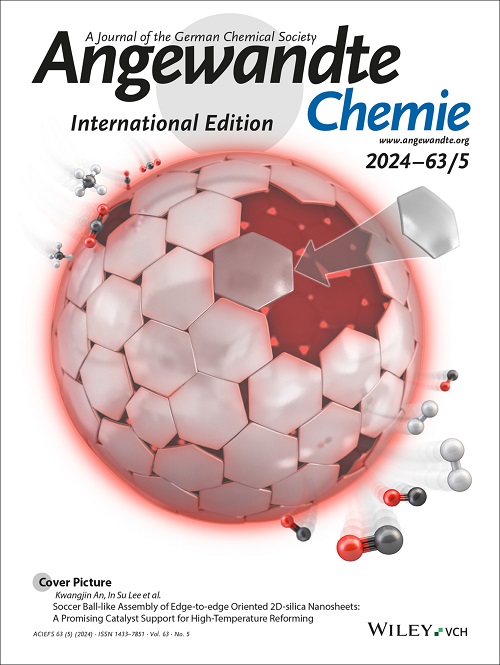大肠杆菌5-氨基乙酰酸生物合成途径的代谢工程提高了基于血红蛋白的生物催化效率。
IF 16.9
1区 化学
Q1 CHEMISTRY, MULTIDISCIPLINARY
引用次数: 0
摘要
使用血红素依赖性酶的生物催化提供了一个强大的合成平台,以促进有机合成所需的各种化学转化。尽管最近在生物催化方面取得了进展,但由于宿主体内血红素生物合成的严格调控,血红蛋白的重组表达系统仍有很大的改进空间。为了开发一种有效的辅助因子补充系统来表达活性全血红蛋白,我们描述了大肠杆菌血红素生物合成途径的代谢工程。通过引入反硝化副球菌5-氨基乙酰丙酸合成酶的异质C4途径,发现在培养过程中,工程细胞中5-氨基乙酰丙酸和血红素的浓度增加,全血红蛋白的表达水平显著提高。值得注意的是,工程细胞中的血红素含量甚至高于在培养基中添加5-氨基乙酰丙酸的常规培养方法。此外,我们还展示了这种工程大肠杆菌细胞在使用各种血红素依赖酶的全细胞和裂解物为基础的生物催化中的应用。考虑到近年来对生物催化的需求,本研究开发的系统将为基于血红蛋白的生物催化提供一个新的实用和通用的平台。本文章由计算机程序翻译,如有差异,请以英文原文为准。
Metabolic Engineering of the 5-Aminolevulinate Biosynthetic Pathway in E. coli Improves Efficiency of Hemoprotein-Based Biocatalysis.
Biocatalysis using heme-dependent enzymes provides a powerful synthetic platform to facilitate a variety of chemical transformations required for organic synthesis. Despite recent advances in biocatalysis, recombinant expression systems for hemoproteins leave much room for improvement due to the strict regulation of heme biosynthesis in the host organism. To develop an efficient cofactor supplementation system for the expression of active holohemoproteins, we describe metabolic engineering of the heme biosynthetic pathway in E. coli. Through incorporation of a heterogeneous C4 pathway involving 5-aminolevulinic acid synthase of Paracoccus denitrificans, it was found that the concentrations of 5-aminolevulinic acid and heme in the engineered cells are increased during cultivation, and the expression level of the holohemoproteins is significantly improved. Notably, the heme content in the engineered cells is even higher than that produced by conventional cultivation methods, which add 5-aminolevulinic acid into the culture medium. Furthermore, we also demonstrate the application of this engineered E. coli cells in whole-cell and lysate-based biocatalysis using various types of heme-dependent enzymes. Considering the recent demand for biocatalysis, the system developed in this study will serve as a new practical and versatile platform for hemoprotein-based biocatalysis.
求助全文
通过发布文献求助,成功后即可免费获取论文全文。
去求助
来源期刊
CiteScore
26.60
自引率
6.60%
发文量
3549
审稿时长
1.5 months
期刊介绍:
Angewandte Chemie, a journal of the German Chemical Society (GDCh), maintains a leading position among scholarly journals in general chemistry with an impressive Impact Factor of 16.6 (2022 Journal Citation Reports, Clarivate, 2023). Published weekly in a reader-friendly format, it features new articles almost every day. Established in 1887, Angewandte Chemie is a prominent chemistry journal, offering a dynamic blend of Review-type articles, Highlights, Communications, and Research Articles on a weekly basis, making it unique in the field.

 求助内容:
求助内容: 应助结果提醒方式:
应助结果提醒方式:


